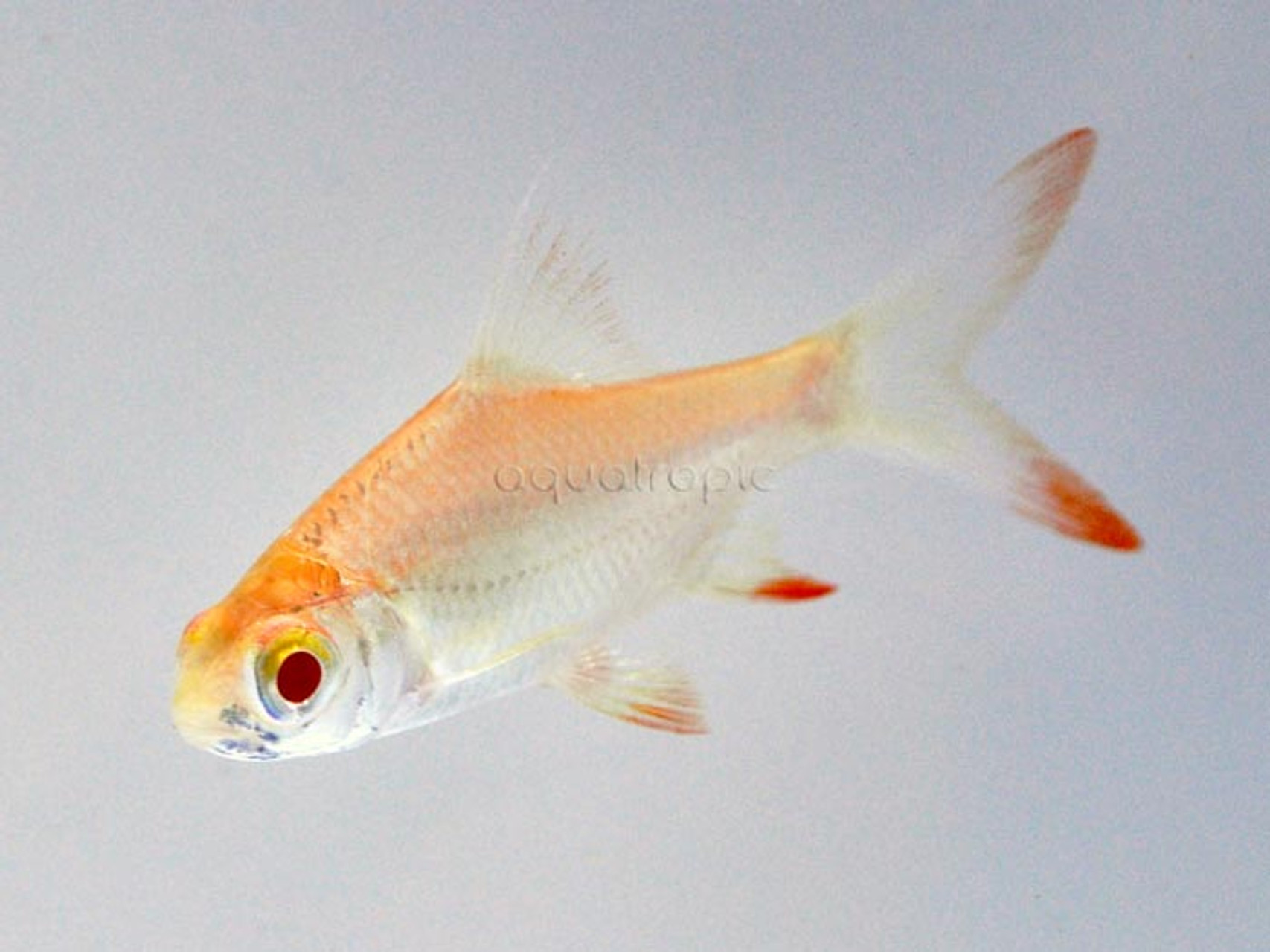The Tinfoil Barb (Barbonymus schwanefeldii)

With its sleek profile and eye-catching silvery scales, the Tinfoil Barb (Barbonymus schwanefeldii) makes for an impressive addition to the home aquarium; however, this is one species that relatively few aquarists have the means to adequately house long-term. While the juvenile specimens seen for sale in most aquarium stores will do fine in smaller tanks initially, adult specimens can easily reach a foot in length and, given their rather bulky shape and active swimming behavior, will inevitably outgrow all but the largest of home aquaria.
The larger rivers of Southeast Asia constitute the native range of this fish, though specimens seen for sale are nearly always captive-bred (such as the attractive albino variation offered by Aquatropic) Like most barbs, this is a schooling species that will benefit from being kept in numbers. Of course, housing multiple specimens of such a large fish puts further demands on the aquarium size needed, as a school (5+) of adult Tinfoil Barbs is best housed in a fish tank of at least 200 gallons or more. While it might be tempting to keep just a single specimen, such individuals often become stressed and swim erratically.
Barbonymus are thought to be close relatives of the Common Carp, and, like that fish, this is a heavily herbivorous species in the wild, though it will still greedily accept meaty foods when offered. It’s best to feed a high-quality dry food formulated for this diet, such as koi or goldfish pellets. Flake foods will prove to be a messy option for all but the smallest individuals and should be avoided. Fresh vegetables (shelled peas, spinach, zucchini) can also be supplemented.
As for tankmates, this active fish can be mixed with a wide array of species, so long as they aren’t going to be bothered by the Tinfoil Barbs active swimming style and aren’t small enough to be swallowed whole. Larger cichlids are a good choice, as our many catfishes, rainbowfishes, and bigger tetras and barbs. As this fish comes from the open channels of larger rivers, aquarium decor is of little importance, and a completely bare tank may even be preferable so as to avoid any problems from this rather spastic species running into sharp decorations when spooked. A secure lid is also needed to keep your barb in the water and not on your carpet. But, aside from its large size, B. schwanefeldii proves to be a hearty and peaceful fish in captivity, and, if given a suitably sizable fish tank, this silvery barb can be expected to provide decades of enjoyment.